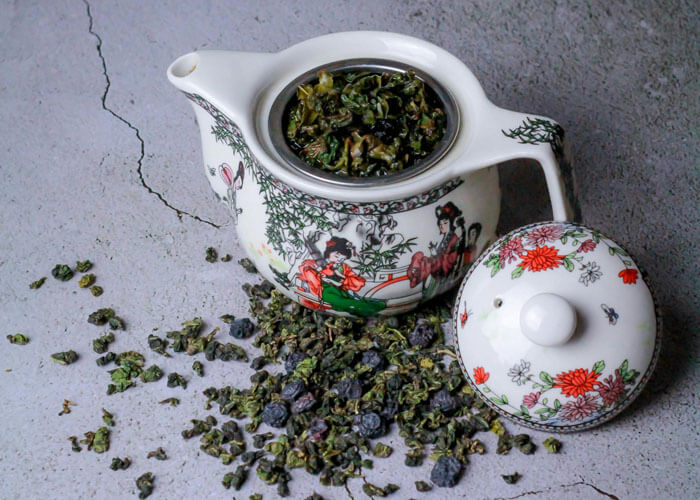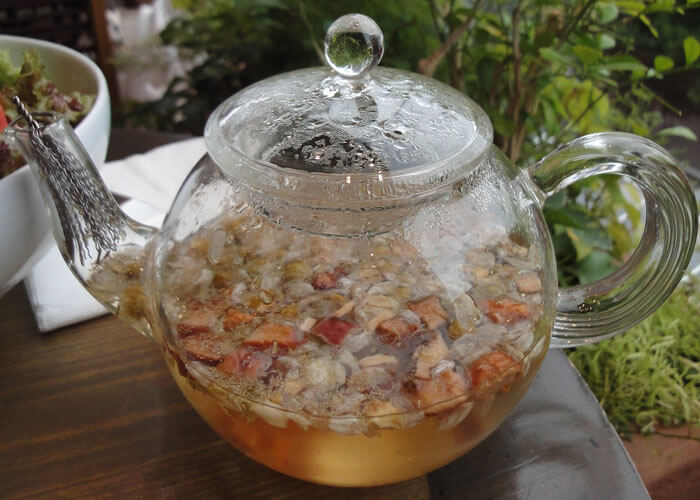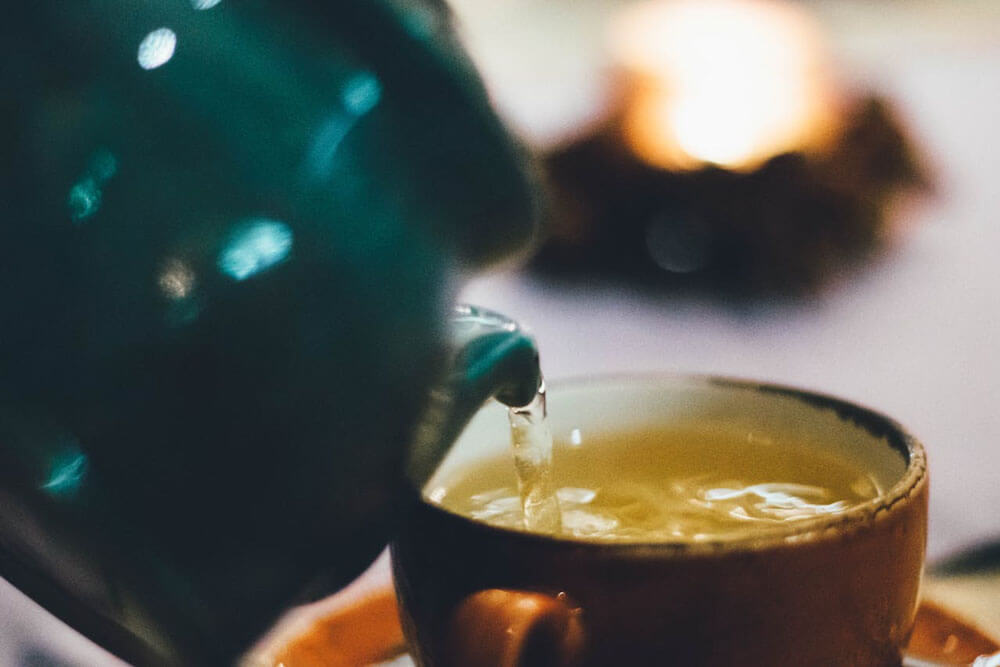Exploring the world of Chinese cuisine unveils a myriad of flavors, aromas, and traditions deeply rooted in history. Amidst the cultural tapestry lies the humble yet ubiquitous beverage – tea. Steeped in centuries of tradition and symbolism, tea holds a significant place in Chinese gastronomy, offering not only a refreshing beverage but also a glimpse into the rich heritage of the country.
In this blog article, we delve into the enchanting world of tea served at those Chinese restaurants, uncovering the diverse varieties, cultural significance, and etiquettes that accompany this beloved beverage.
Most Common: Oolong, Jasmine
In Chinese restaurants, two of the most commonly served teas are Oolong and Jasmine. Oolong tea, known for its partially oxidized leaves, offers a balanced flavor profile ranging from floral to fruity notes, making it a versatile choice to complement various dishes. Meanwhile, Jasmine tea, infused with delicate jasmine blossoms, exudes a fragrant aroma and a subtle sweetness, enhancing the dining experience with its soothing qualities. These beloved teas not only tantalize the taste buds but also reflect the rich cultural heritage of Chinese gastronomy.
Oolong Tea
Oolong tea occupies a unique space in the world of tea, as it undergoes a partial oxidation process, which places it between green and black teas in terms of flavor and color. This partial oxidation leads to a diverse range of flavors, aromas, and colors, depending on the degree of oxidation and the processing methods employed. Oolong teas can range from lightly floral and grassy to deeply rich and roasted, offering a spectrum of tastes to explore.

Its versatility makes it an ideal accompaniment to a wide array of Chinese dishes, from light and delicate seafood dishes to rich and savory meat-based meals. Oolong tea is also celebrated for its numerous health benefits, including aiding digestion, promoting weight loss, and boosting metabolism.
Jasmine Tea
Jasmine tea is revered for its captivating aroma and delicate flavor, thanks to the infusion of jasmine blossoms during the tea-making process. Typically, green tea leaves serve as the base for Jasmine tea, allowing the floral fragrance of Jasmine to complement the grassy and slightly astringent notes of the tea leaves.
The scenting process involves layering jasmine blossoms with the tea leaves, allowing the latter to absorb the floral essence over time. The result is a tea that boasts a subtly sweet and floral taste, reminiscent of springtime blooms. Beyond its delightful flavor, Jasmine tea is also cherished for its calming and soothing properties, making it a perfect choice to enjoy after a meal or during moments of relaxation.

In Chinese culture, both Oolong and Jasmine tea hold symbolic significance and are often associated with hospitality, friendship, and harmony. Whether sipped alone or paired with a flavorful meal, these teas offer a glimpse into the rich tapestry of Chinese culinary traditions and continue to enchant tea enthusiasts worldwide with their timeless appeal.
How to Judge?
Judging the type of Chinese tea typically involves assessing several key characteristics, including color, scent, and flavor. Here’s how you can evaluate Chinese tea based on these factors:
Color
- The color of the tea liquor (the liquid produced after steeping the tea leaves) can provide valuable insights into the type of tea. Different types of Chinese tea exhibit distinct colors due to variations in processing and oxidation levels.
- Green teas tend to produce a pale yellow or greenish-yellow liquor.
- Oolong teas may range from pale yellow to amber or even reddish-brown, depending on the degree of oxidation.
- Black teas typically yield a rich, reddish-brown or dark brown liquor.
- White teas often produce a very light, pale yellow liquor with a slight hint of green.
Scent
- The aroma of the dry leaves, as well as the brewed tea, can offer clues about the type and quality of the tea.
- Green teas often have a fresh, grassy aroma with vegetal undertones.
- Oolong teas may feature floral, fruity, or roasted notes, depending on the specific variety.
- Jasmine teas are prized for their delicate floral fragrance, which should be prominent but not overpowering.
- Black teas often exhibit malty, earthy, or even fruity aromas, sometimes accompanied by hints of spice or sweetness.
- White teas typically have a subtle, delicate aroma with floral or fruity nuances.
Flavor
- The flavor profile of the brewed tea is perhaps the most important factor in identifying its type.
- Green teas are known for their fresh, vegetal flavors, often accompanied by subtle sweetness and slight astringency.
- Oolong teas offer a diverse range of flavors, from floral and fruity to toasty and nutty, with varying levels of sweetness and complexity.
- Jasmine teas should have a delicate, floral taste with a subtle sweetness and a clean finish.
- Black teas may feature robust, malty flavors with notes of caramel, chocolate, or dried fruit, along with a full-bodied mouthfeel.
- White teas are prized for their delicate, nuanced flavors, which may include floral, fruity, and honey-like notes, often with a subtle sweetness and a refreshing finish.
By carefully observing the color, scent, and flavor of the tea, you can develop a deeper appreciation for its unique characteristics and better understand its type and quality. Practice and experience are key to honing your ability to judge Chinese tea effectively.
Table Manners of Chinese Tea
Table manners surrounding the serving and consumption of Chinese tea are deeply ingrained in Chinese culture and are often considered an important aspect of social etiquette. Here are some key table manners to observe when enjoying Chinese tea:
1. Pouring and Receiving Tea:
When serving tea to others, hold the teapot with one hand and support the lid with the other to prevent it from falling off.
Pour tea for others before serving yourself as a sign of respect.
When receiving tea, lightly tap the table with your fingers to express gratitude.
2. Cups and Saucers:
Hold the teacup by the rim or the bottom to avoid heating the entire cup.
Use the accompanying saucer to catch any drips when pouring or drinking tea.
Avoid clinking the teacup against the teapot or other cups, as it is considered impolite.
3. Gesture of Thanks:
After receiving a refill of tea, gently tap your index and middle fingers (or all fingers together) on the table to express thanks.
This gesture acknowledges the server’s attentiveness and is a polite way to show appreciation.
4. Drinking Tea:
When drinking tea, lift the teacup with both hands to show respect, especially when receiving tea from someone older or of higher status.
Take small sips rather than gulping the tea down quickly.
Avoid blowing on the tea to cool it down, as it may be interpreted as impatience.
5. Teapot Etiquette:
Avoid letting the teapot become empty, as it is considered impolite to leave guests without tea.
Refill the teapot or ask for more tea promptly to ensure everyone has a continuous supply.
6. Conversation and Enjoyment:
Chinese tea ceremonies often involve conversation and relaxation, so enjoy the tea while engaging in meaningful discussions with companions.
Take time to appreciate the aroma, flavor, and texture of the tea, savoring each sip.
7. End of the Meal:
At the end of the meal, it is customary to express gratitude to the host for the tea and hospitality.
Offer to help pour tea or assist with cleaning up as a gesture of goodwill.
By observing these table manners, you can fully immerse yourself in the rich cultural tradition surrounding Chinese tea and show respect for both the tea itself and your fellow tea drinkers.
Common Chinese Dialog about Drinking Tea
Here’s a common Chinese dialog about drinking tea, along with pinyin for pronunciation guidance:
A: 你喜欢喝什么茶?
Nǐ xǐhuān hē shénme chá?
B: 我喜欢喝绿茶,你呢?
Wǒ xǐhuān hē lǜchá, nǐ ne?
A: 我喜欢喝乌龙茶和花茶。
Wǒ xǐhuān hē wūlóng chá hé huāchá.
B: 乌龙茶有很多种类,你最喜欢哪一种?
Wūlóng chá yǒu hěnduō zhǒnglèi, nǐ zuì xǐhuān nǎ yī zhǒng?
A: 我最喜欢铁观音,因为它有浓郁的香味和口感。
Wǒ zuì xǐhuān tiě guānyīn, yīnwèi tā yǒu nóngyù de xiāngwèi hé kǒugǎn.
B: 我也很喜欢铁观音,我们下次一起喝吧!
Wǒ yě hěn xǐhuān tiě guānyīn, wǒmen xià cì yīqǐ hē ba!
Translation:
A: What kind of tea do you like to drink?
B: I like to drink green tea, how about you?
A: I enjoy drinking Oolong tea and flower tea.
B: There are many varieties of Oolong tea, which one do you like the most?
A: I like Tie Guan Yin the most because it has a rich aroma and flavor.
B: I also really like Tie Guan Yin. Let’s drink it together next time!
To Wrap Up
In conclusion, the art of drinking tea in Chinese culture is not merely a beverage choice but a reflection of personal preferences, cultural heritage, and social interactions. We’ve uncovered the diverse range of teas enjoyed by individuals, from the crisp freshness of green tea to the nuanced flavors of Oolong and flower teas like Jasmine.
Each cup tells a story of tradition, craftsmanship, and appreciation for nature’s bounty. Whether sipping on a fragrant cup of Tie Guan Yin or sharing a pot of green tea with friends, the experience of drinking tea transcends the simple act of hydration, offering moments of tranquility, connection, and celebration of life’s simple pleasures.
So, the next time you sit down to enjoy a cup of Chinese tea, remember the rich tapestry of culture and tradition that accompanies it, and savor each sip with mindfulness and gratitude.

